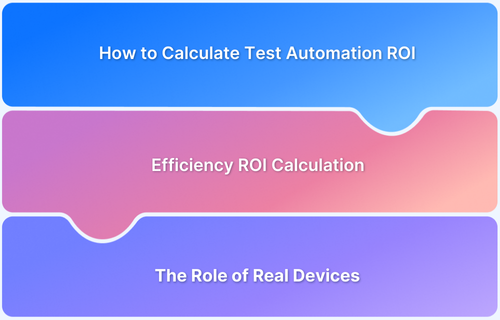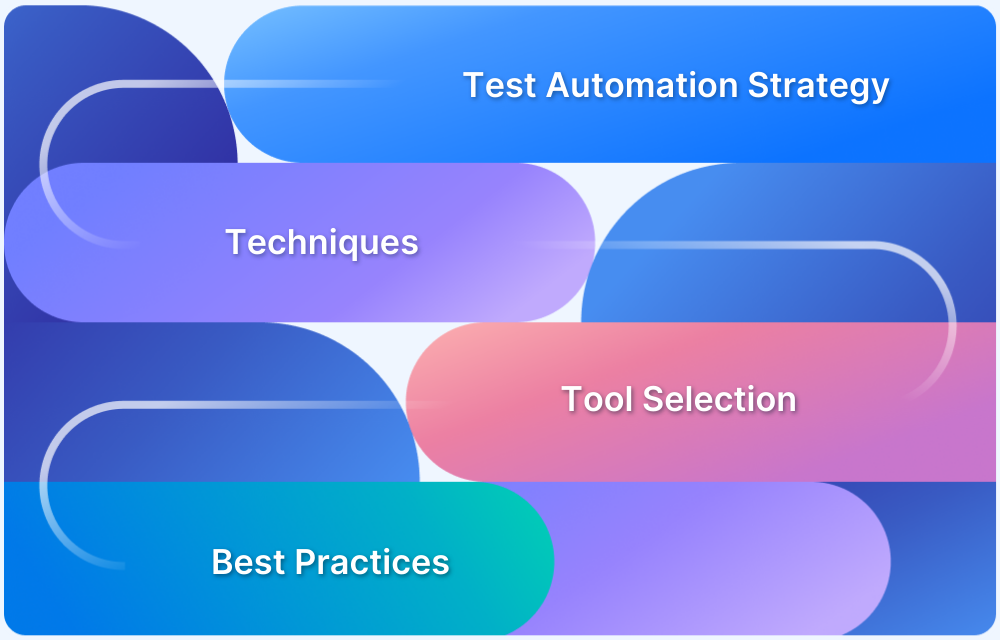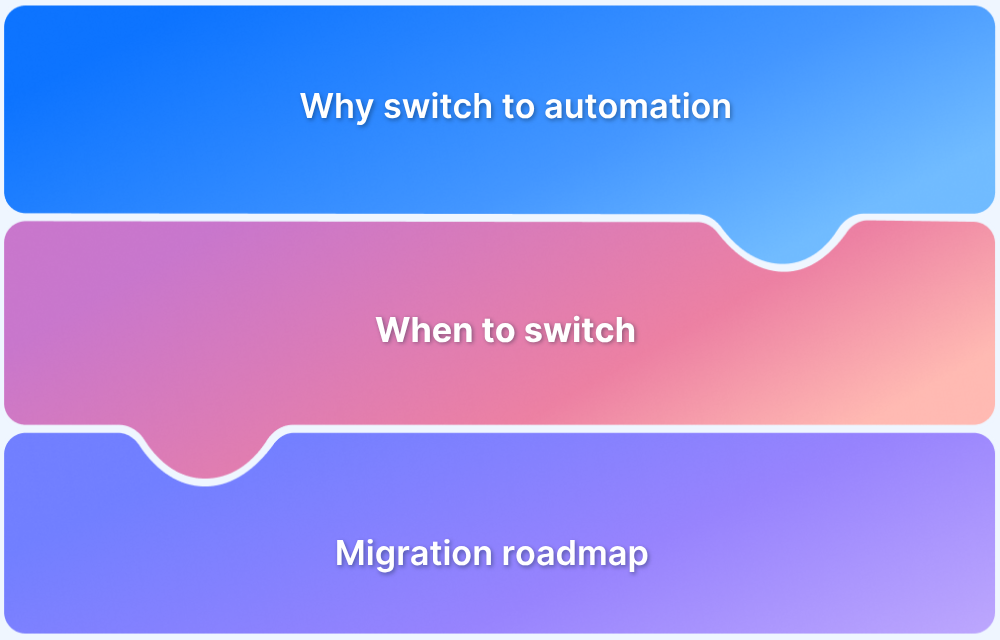Is your organization fully leveraging the value of Quality Assurance (QA)? Despite QA’s proven ability to accelerate releases, enhance customer trust, and protect revenue streams, many organizations still face challenges in justifying its investment.
Organizations using data-driven QA strategies report a 30% reduction in software defects, yet securing leadership buy-in for the necessary resources remains a common hurdle.
Neglecting QA can lead to costly defects, delayed releases, and ultimately, customer dissatisfaction. The real challenge lies in demonstrating how a comprehensive QA strategy can mitigate these risks and deliver tangible, measurable business value that goes beyond cost savings to impact overall business outcomes.
A strong business case for QA not only highlights its cost-saving potential but also demonstrates its value as a strategic driver of business outcomes.
This article explores the critical elements of building a business case for QA, including the value proposition of QA, how to measure its impact, and strategies to justify investments in testing and automation.
Why Is a Business Case for QA Important?
A business case for QA ensures that testing efforts are seen as aligned with organizational goals rather than as isolated engineering activities. It:
- Converts abstract testing benefits into measurable financial impact.
- Demonstrates how QA reduces risks such as revenue loss, downtime, and brand damage.
- Builds stakeholder confidence that QA investment will deliver ROI.
- Provides a framework for long-term resource planning.
In other words, a QA business case helps executives understand not just why QA is needed, but what the business gains from it.
What Is the QA Value Proposition?
The QA value proposition defines the unique business benefits of investing in quality assurance. It is the answer to the question, “What does the organization gain from QA?”
Key pillars include:
- Risk Reduction: Catching issues earlier in the lifecycle prevents costly production incidents.
- Operational Efficiency: Test automation reduces regression cycles from weeks to hours.
- Revenue Enablement: Higher quality improves adoption rates, conversion, and renewals.
- Customer Loyalty: A smooth digital experience fosters trust and retention.
- Compliance Protection: QA ensures adherence to regulations, avoiding penalties.
A well-defined QA value proposition ties technical improvements directly to financial and strategic outcomes.
Read More: Calculating Test Automation ROI: A Guide
How do you create a QA Case Study?
A QA case study demonstrates value in practice. It provides context-driven proof that convinces stakeholders.
Steps for building a QA case study:
- Define the Challenge: e.g., excessive production bugs or slow release cycles.
- Present the QA Strategy: such as introducing automated regression or service virtualization.
- Show Quantifiable Results: metrics like reduced cycle time, fewer critical incidents, or improved app ratings.
- Translate Into Business Value: link these improvements to customer satisfaction, lower costs, or higher sales.
For example, a telecom company could show that shifting to automated regression reduced cycle time by 70%, enabling faster feature rollout that directly improved customer acquisition.
How can you prove the Impact of QA?
Executives care about outcomes tied to financial performance, customer satisfaction, and operational efficiency—not the number of test cases executed. To prove QA’s impact, QA leaders must translate technical improvements into business language supported by measurable metrics.
Key metrics to highlight include:
- Defect Leakage Rate: Demonstrates how effective QA is at preventing bugs from reaching production. Lower leakage means fewer customer-facing issues, reduced support tickets, and fewer refunds or SLA penalties.
- Rework Savings: Fixing defects late in the lifecycle is exponentially more expensive. By detecting issues earlier, QA reduces rework costs and keeps engineering teams focused on innovation instead of firefighting.
- Release Velocity: Consistently faster, stable releases directly impact time-to-market. This enables the business to capture opportunities—such as seasonal campaigns or competitive feature launches—without delays.
- Customer Retention: A seamless, reliable product experience improves satisfaction and reduces churn. This translates into higher renewal rates and customer lifetime value.
The most persuasive business cases connect these metrics to real financial outcomes. For example, framing QA improvements as: “Reducing post-release defects by 30% lowered annual support costs by $1.2M and improved customer retention by 12%.” This type of data-driven narrative shifts QA from being seen as a technical function to a proven business enabler.
Read More: How to determine the Right Testing Metrics
How do you Justify Investment in Testing?
Securing investment in testing often requires shifting the conversation from technical necessities to measurable business outcomes. Executives and budget holders need to see how QA directly reduces risk, protects revenue, and accelerates delivery—not just that “quality is important.”
The most effective way to justify testing investment is to combine financial reasoning with strategic alignment:
- Quantify Risk Avoidance: Highlight the financial impact of defects if they reach production. Industry studies show that the cost of fixing a bug in production can be up to 30 times higher than fixing it during development. Presenting this data in monetary terms (e.g., “a single critical outage could cost us $500,000 in lost revenue and SLA penalties”) reinforces QA’s role as a safeguard.
- Benchmark Against Competitors: Demonstrate how inadequate QA slows time-to-market. If competitors release weekly while your team takes a month due to unstable builds, the lost revenue opportunities become an undeniable justification for investing in stronger testing practices.
- Link to Compliance and Risk Management: In sectors like finance, healthcare, or aviation, failure to meet compliance standards can lead to lawsuits and fines. Positioning QA as a preventive measure against regulatory penalties creates strong financial and legal justification.
- Show Return on Faster Delivery: Faster, more reliable releases mean features and products reach customers sooner. This accelerates revenue realization and helps capture market opportunities, which far outweigh the upfront cost of QA.
- Use Scenario Comparisons: Model outcomes “with QA” vs. “without QA.” For example, compare a scenario where a release has insufficient testing, leading to a week-long outage, with one where QA prevented the issue, saving both revenue and reputation.
Ultimately, justifying testing investment requires demonstrating that QA is not a discretionary cost but a critical enabler of stability, growth, and competitive advantage. By positioning QA as both risk insurance and a revenue accelerator, organizations can secure executive buy-in for continued investment.
What Is the ROI of Automation Tools?
Automation tools are often positioned as a silver bullet for QA, but executives need more than technical benefits—they require clear financial justification. Calculating the ROI (Return on Investment) of automation involves comparing the upfront and ongoing costs with the measurable long-term savings and business gains.
The ROI of automation tools typically comes from four primary drivers:
- Execution Speed and Efficiency: Automated tests can run thousands of cases in minutes, compared to hours or days for manual testers. This speed is particularly impactful in regression testing, where savings compound across every release. For instance, reducing regression from 5 days to 5 hours accelerates release velocity and time-to-market.
- Parallelization Across Environments: Modern automation platforms allow parallel execution across browsers, devices, and operating systems. This ensures broad coverage without linear time increases, reducing the need for physical device labs and accelerating cross-platform readiness.
- Reusability and Scalability: Once automated, test scripts can be reused across builds, features, and environments. Unlike manual tests that require repetitive labor, automation scales without proportional cost increases. The larger the product and release cadence, the more cost-effective automation becomes.
- Reduction in Human Error: Manual testing is prone to fatigue and inconsistency. Automation ensures repeatability and consistency, lowering the chance of missed bugs and reducing post-release defect costs.
To make the case stronger, ROI should be quantified in business terms:
- Costs: Initial tool licensing or subscription fees, infrastructure, training, and script development.
- Savings: Reduced manual testing hours, lower defect leakage, shorter release cycles, and fewer production hotfixes.
- Payback Period: Most organizations realize ROI within 6–12 months as the savings from reduced regression cycles and faster releases exceed the initial investment.
For example: if manual regression testing costs $50,000 per release cycle and automation reduces this to $10,000 (via faster execution and fewer staff hours), across 12 releases a year the business saves $480,000 annually. If the automation setup cost $150,000, the payback period is less than four months.
By framing automation tools not just as a productivity enhancer but as a financially self-sustaining investment, QA leaders can gain stronger executive support.
Read More: What are Software Testing Standards
How Do You Build a Business Case for Test Automation?
Test automation is often seen as a purely technical initiative, but to gain executive approval, it must be positioned as a business enabler. A well-built business case connects automation with strategic goals such as faster releases, reduced costs, improved customer satisfaction, and competitive advantage.
The process of building a strong business case for test automation involves several steps:
- Identify Current Bottlenecks: Start by pinpointing pain points in the existing QA process. These often include slow regression cycles, excessive reliance on manual testing, limited coverage across devices or environments, and high defect leakage. Clearly outline how these bottlenecks affect business outcomes—for example, “Delayed regression testing is slowing releases by two weeks, impacting revenue opportunities.”
- Quantify the Impact of Automation: Translate automation benefits into measurable outcomes. Calculate how much time could be saved if manual regression (taking 5 days) is replaced with automation (reduced to a few hours). Quantify the financial benefits in terms of reduced labor costs, accelerated time-to-market, and fewer post-release defects.
- Estimate ROI and Payback Period: Provide a cost-benefit analysis that weighs tool costs, infrastructure, and training against long-term savings. For instance, automation may cost $200,000 upfront but generate $500,000 in annual savings by cutting manual testing hours and accelerating releases. Highlighting a 6-month payback period makes the case compelling.
- Align with Business Strategy: Position automation as integral to broader initiatives such as Agile transformation, DevOps adoption, or digital expansion. For example, if the company’s strategy is to release weekly instead of monthly, automation becomes a mandatory enabler rather than an optional upgrade.
- Highlight Competitive Advantage: Show how automation enables faster and more reliable delivery compared to competitors. This resonates strongly with executives focused on market share and customer experience.
- Address Risks and Mitigation: Acknowledge challenges such as initial setup time or flaky tests, and present strategies to overcome them (e.g., phased rollouts, pilot projects, using proven frameworks). This builds credibility and reduces executive concerns.
When presented with clear metrics, ROI projections, and alignment with strategic goals, test automation transforms from a technical “nice to have” into a business-critical investment. It’s not just about testing faster—it’s about enabling the organization to innovate, release reliably, and protect revenue at scale.
What Is the Cost of Poor QA?
The cost of poor QA is not limited to fixing bugs—it extends across financial, reputational, operational, and even legal dimensions. Organizations that underinvest in quality assurance often pay a far higher price later through lost revenue, customer churn, and brand damage.
The true costs can be categorized into several areas:
- Direct Financial Losses: Software failures in production can result in downtime, refunds, or lost transactions. For example, Amazon once reported that every minute of downtime during peak sales cost them over $2 million in lost revenue. In financial services, a small error in transaction processing can lead to millions in losses within hours.
- Reputational Damage: Customers are less forgiving of buggy or unstable applications. A single negative incident—like a mobile app crashing during a critical transaction—can erode trust and spark negative reviews. This damage to reputation directly affects customer acquisition and long-term brand loyalty.
- Customer Churn: Poor QA translates into broken user journeys, checkout failures, or performance issues. Data from PwC shows that 32% of customers stop doing business with a brand they love after just one bad experience. This churn results in long-term revenue losses that are difficult to recover.
- Compliance and Legal Penalties: In regulated industries such as healthcare, aviation, and banking, poor QA can lead to non-compliance with strict regulations (e.g., HIPAA, GDPR, SOX). The resulting fines, lawsuits, or class actions often dwarf the cost of preventive QA investments.
- Operational Inefficiency: Poor QA forces development teams to divert resources toward firefighting production issues. Instead of building new features, engineers spend cycles on hotfixes, patch releases, and customer support escalations—slowing innovation and increasing technical debt.
- Employee Morale and Productivity: Continuous firefighting due to recurring defects creates stress and frustration among QA and development teams. Low morale leads to decreased productivity and higher attrition, which introduces hidden costs in hiring and training replacements.
Industry studies consistently show that the cost of fixing a defect post-release can be up to 30x higher than fixing it during design or development. This multiplier effect makes a strong case for investing in preventive QA practices.
In short, the cost of poor QA isn’t just about bug fixes—it’s about lost opportunities, damaged trust, and long-term financial impact. For most organizations, the cost of preventive QA is a fraction of the potential losses caused by neglecting it.
How Can You Reduce Testing Costs?
Reducing testing costs does not mean cutting corners on quality—it means optimizing resources, tools, and processes to deliver more value with less spend.
Many organizations mistakenly try to lower costs by reducing QA headcount or scaling back coverage, but this often backfires, leading to higher defect leakage and increased post-release expenses. A smarter approach focuses on efficiency, automation, and smarter test design.
Key strategies for reducing testing costs include:
- Shift-Left Testing: Defects are cheapest to fix when discovered early. By embedding testing into the development process—through unit tests, static code analysis, and automated integration checks—organizations prevent issues from propagating downstream, where fixes are exponentially more expensive.
- Prioritize High-Value Tests: Not all tests deliver equal ROI. By applying risk-based testing, teams can prioritize automation and manual efforts on business-critical workflows and high-risk areas, while reducing redundant or low-value tests that consume resources without meaningful impact.
- Leverage Test Automation Wisely: Automation reduces repetitive manual testing costs and accelerates regression cycles. However, automation should not aim for 100% coverage but focus on stable, repeatable, and high-value scenarios. This ensures automation delivers savings without inflating maintenance overhead.
- Optimize Test Data Management: Test execution delays often stem from unavailable or inconsistent data. By automating test data provisioning and using synthetic datasets, QA teams avoid costly bottlenecks and wasted tester hours waiting for environments to be ready.
- Adopt Cloud-Based Testing Infrastructure: Maintaining physical device labs or large on-premise environments is costly and resource-intensive. Cloud-based platforms provide instant access to thousands of browsers and devices on demand, eliminating infrastructure overhead and reducing operational expenses.
- Implement Service Virtualization: In complex systems, dependencies such as third-party APIs or backend services may be unavailable during testing. Service virtualization simulates these dependencies, reducing delays and costs associated with waiting for integration readiness.
- Continuously Eliminate Test Debt: Flaky, redundant, and outdated tests drain resources. Regular test suite audits and refactoring ensure that only valuable, reliable tests consume execution time and maintenance effort, reducing waste.
- Use Metrics to Drive Efficiency: Track metrics like cost per defect detected, test execution time, and automation ROI. This helps identify areas of inefficiency and ensures that QA resources are always aligned with maximum business impact.
What is the Cost-Benefit of Test Automation?
Test automation is often seen as an expensive upfront investment, but when analyzed over time, its benefits far outweigh its costs. Understanding the cost-benefit of automation requires examining not only the financial aspects but also the long-term strategic value it delivers to an organization.
Costs of Test Automation
The initial and ongoing expenses associated with automation include:
- Tool Licensing or Subscription Fees: Depending on the chosen framework or platform, this can range from open-source (with hidden setup costs) to enterprise-grade commercial tools.
- Infrastructure: Servers, cloud environments, and device labs needed to execute automated tests at scale.
- Implementation and Setup: Time and resources required to build frameworks, integrate with CI/CD pipelines, and design test suites.
- Training and Upskilling: Ensuring QA engineers and developers are proficient with automation frameworks and scripting languages.
- Maintenance: Updating test scripts in response to UI changes, new features, or evolving business rules.
Benefits of Test Automation
While costs are front-loaded, the benefits are recurring and compounding:
- Reduced Regression Time: Automated suites run far faster than manual efforts. A test cycle that takes 5 days manually can be reduced to a few hours with automation.
- Scalability and Reusability: Once built, test scripts can be reused across multiple builds, features, and environments without proportional increases in cost.
- Improved Coverage: Automation makes it feasible to test across a wider range of browsers, devices, and OS combinations, reducing the risk of missed defects.
- Increased Accuracy: Automated tests remove the risk of human error, ensuring consistent and repeatable results.
- Faster Feedback Loop: Immediate feedback on code changes enables teams to fix defects earlier, reducing rework costs.
- Better Resource Utilization: Testers can shift focus from repetitive checks to exploratory, usability, and edge-case testing, where human insight adds more value.
The Cost-Benefit Equation
When measured over several release cycles, the ROI of automation becomes evident:
- Break-even Point: Most organizations recover automation setup costs within 6–12 months.
- Annual Savings: Reduction in manual testing hours and faster releases translate into significant cost avoidance.
- Business Enablement: Beyond cost savings, automation supports continuous delivery, enabling businesses to capture market opportunities faster than competitors.
For example, if a company spends $80,000 annually on manual regression testing and automation reduces this to $20,000 (after an initial $100,000 setup cost), the first-year net savings are $60,000. In subsequent years, the savings compound, delivering a multi-fold return on investment.
Strategic Benefits
Beyond financial gains, automation delivers intangible but critical strategic value:
- Market Agility: Enables faster release cycles and responsiveness to customer needs.
- Customer Trust: Higher quality releases improve satisfaction and loyalty.
- Employee Productivity: Reduces burnout from repetitive manual testing and boosts morale.
- Competitive Advantage: Companies with mature automation pipelines can outpace rivals in delivering reliable products.
In summary, while test automation requires upfront investment, the long-term cost-benefit strongly favors adoption. The financial savings, operational efficiency, and strategic agility it enables make it a cornerstone of modern QA strategies.
How Do You Justify QA Costs?
QA cost justification is often the toughest task for QA leaders, as budgets are tightly scrutinized. To justify QA costs convincingly:
- Link QA Directly to Revenue Protection: A bug that causes 1% churn in a subscription-based business can translate into millions in lost revenue. Preventing this demonstrates direct ROI.
- Show Opportunity Enablement: Faster release cycles allow businesses to capture seasonal or market-driven opportunities sooner. For example, releasing features before Black Friday directly ties QA investment to revenue gains.
- Compare Prevention vs. Remediation Costs: Industry studies show that fixing a defect in production can be 30x more expensive than fixing it during development. Demonstrating this cost differential reinforces preventive QA investment.
- Present QA as Insurance: Much like cybersecurity, QA is a protective investment. Leaders understand insurance logic—spending a small percentage upfront to prevent catastrophic losses.
- Use Case Studies: Share real-world stories from the business (or industry benchmarks) showing how QA avoided significant outages or compliance issues.
Instead of positioning QA costs as “overhead,” reframing them as risk mitigation plus revenue enabler makes the argument compelling.
A critical component of this strategy is to integrate the right tool with the QA process, and expert insights can make a great difference. Connect with our experts to refine your tool selection and automation strategy to build a stronger QA case, ensuring you demonstrate the true value of QA and drive long-term business success.
Get Expert QA Guidance Today
Schedule a call with BrowserStack QA specialists to discuss your testing challenges, automation strategies, and tool integrations. Gain actionable insights tailored to your projects and ensure faster, more reliable software delivery.
Why choosing the Right Testing Tool Is Important for Justifying the Business Case
Even with a solid QA strategy, using the wrong tools can weaken the business case. Tools directly influence scalability, coverage, and efficiency—key factors executives care about.
Reasons why tool selection matters:
- Execution Scalability: Tools must support high-volume parallel execution to handle enterprise-scale test suites. Without it, regression testing becomes a bottleneck.
- Cross-Platform Coverage: In a multi-device world, tools that lack broad browser and device coverage lead to missed defects and customer complaints.
- Integration with CI/CD Pipelines: Executives expect testing to align with DevOps workflows. Tools without CI/CD compatibility slow releases.
- Maintenance Efficiency: Poorly designed tools create test debt. The right tools reduce flakiness with features like self-healing tests and easy script management.
- Cost Justification: Tools with robust features reduce total testing costs over time. On the contrary, cheap but limited tools may create hidden costs in delays and defect leakage.
Choosing a right tool, like BrowserStack strengthens the business case by ensuring that QA investments deliver consistent, scalable ROI.
How to ensure Continued Support for QA?
Support must be sustained after initial approval. To keep QA funded:
- Provide Transparent Reporting: Regularly share metrics tied to business outcomes.
- Showcase Quick Wins: Share stories of incidents avoided due to QA interventions.
- Evolve Practices: Adopt AI-driven testing, predictive analytics, and visual validation as the business grows.
- Align with Product Strategy: QA must stay relevant by mapping goals to evolving product objectives.
This ensures QA remains a priority in the long term.
Why choose BrowserStack?
A strong business case for QA is incomplete without the right infrastructure. Even the best QA strategies and automation frameworks will underdeliver if teams lack reliable, scalable environments to execute tests. Building and maintaining in-house device labs is costly, resource-intensive, and often outdated compared to the pace of evolving technologies. This is where BrowserStack provides a significant advantage.
BrowserStack Automate offers a cloud-based testing platform with access to more than 3,500 real devices and browsers, enabling teams to test across real-world conditions without investing in physical hardware. By eliminating the overhead of managing infrastructure, BrowserStack helps QA leaders reduce operational costs and demonstrate clear ROI.
Key benefits that strengthen the QA business case include:
- Scalable Test Execution: Parallel testing allows thousands of automated tests to run simultaneously across environments. This dramatically reduces regression cycle times, enabling organizations to ship updates faster while maintaining high confidence in quality.
- Seamless CI/CD Integration: BrowserStack integrates natively with popular CI/CD tools like Jenkins, GitHub Actions, GitLab, and CircleCI, ensuring that automated tests run continuously as part of the delivery pipeline. This supports DevOps goals and shortens feedback loops.
- Real-Device Accuracy: Unlike emulators or simulators, BrowserStack provides real-device and browser coverage. This ensures issues such as rendering glitches, performance bottlenecks, or device-specific bugs are caught before customers encounter them, reducing defect leakage and associated costs.
- Advanced Debugging Capabilities: Video recordings, network logs, console logs, and screenshots simplify root cause analysis. Faster debugging reduces the time engineers spend triaging defects and accelerates defect resolution.
- Global Reliability: With secure, on-demand access to environments, distributed teams across geographies can collaborate effectively, ensuring consistent testing outcomes.
From a financial perspective, BrowserStack removes the capital and operational expenses of running in-house device farms, allowing QA leaders to show direct cost savings. From a strategic perspective, it enables faster delivery, higher coverage, and better customer experience—all of which reinforce the ROI of QA investments.
Cost of In-House Device Labs vs. BrowserStack
| Factor | In-House Device Labs | BrowserStack Automate |
|---|---|---|
| Initial Investment | $250K–$500K for hardware, setup, and licenses | Zero upfront capital expense |
| Ongoing Costs | Device replacements every 12–18 months, maintenance, IT staff overhead | Subscription-based model with predictable costs |
| Scalability | Limited by physical space and budget | Virtually unlimited; parallel testing at scale |
| Coverage | Dozens of devices, quickly outdated | 3,500+ real devices and browsers |
| Global Access | Local lab access only | Secure access for distributed teams worldwide |
Conclusion
QA is not just a cost—it is a value driver. Its impact is seen in reduced risks, faster delivery, and improved customer experience. By presenting a QA value proposition, proving QA impact, and using cost-benefit analysis of automation, organizations can secure stakeholder buy-in and long-term support.







